Anyone who knows me can vouch for my love of plants, especially those that come with a touch of festive spirit. The Christmas Cactus is one such plant that’s captured my heart over the years. Not only is it an absolute stunner when it blooms, but it’s also surprisingly easy to care for.
Perfect for those of us who may occasionally forget to water our green buddies! If you’re looking to add a pop of color and festivity to your home during the holidays, or even throughout the year, the Christmas Cactus might just be the perfect addition.
Chapter 1: Benefits of Growing a Christmas Cactus
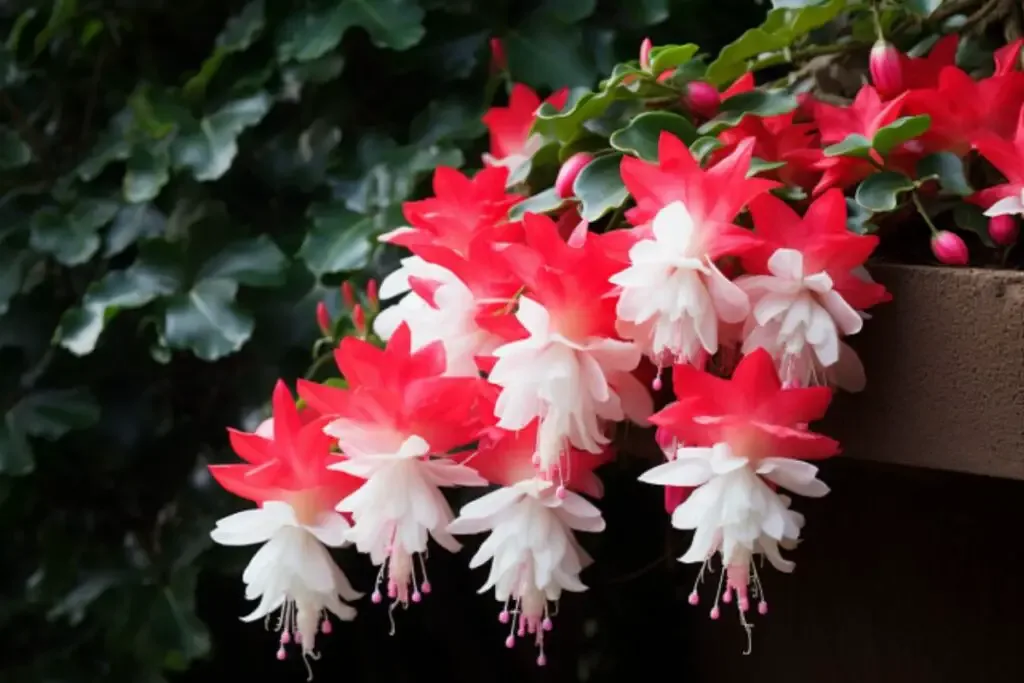
1. Year-Round Beauty
One of the most mesmerizing things about the Christmas Cactus is that, with the right care, it can bloom multiple times a year. It’s not just a holiday plant; it’s a gift that keeps on giving. Plus, those vibrant flowers against the green segmented leaves? Absolutely picture-perfect for your Instagram feed!
2. Low Maintenance
If you’re anything like me, life can get hectic, and sometimes plants get a tad neglected. The Christmas Cactus is forgiving. It doesn’t need constant attention, making it perfect for both novice gardeners and those with a forgetful streak.
3. Air Purification
It’s always a bonus when beauty comes with health benefits. The Christmas Cactus helps purify the air in your home by removing trace amounts of pollutants, ensuring you breathe a little easier.
Chapter 2: My Favorite Christmas Cacti Varieties
1. Schlumbergera Truncate
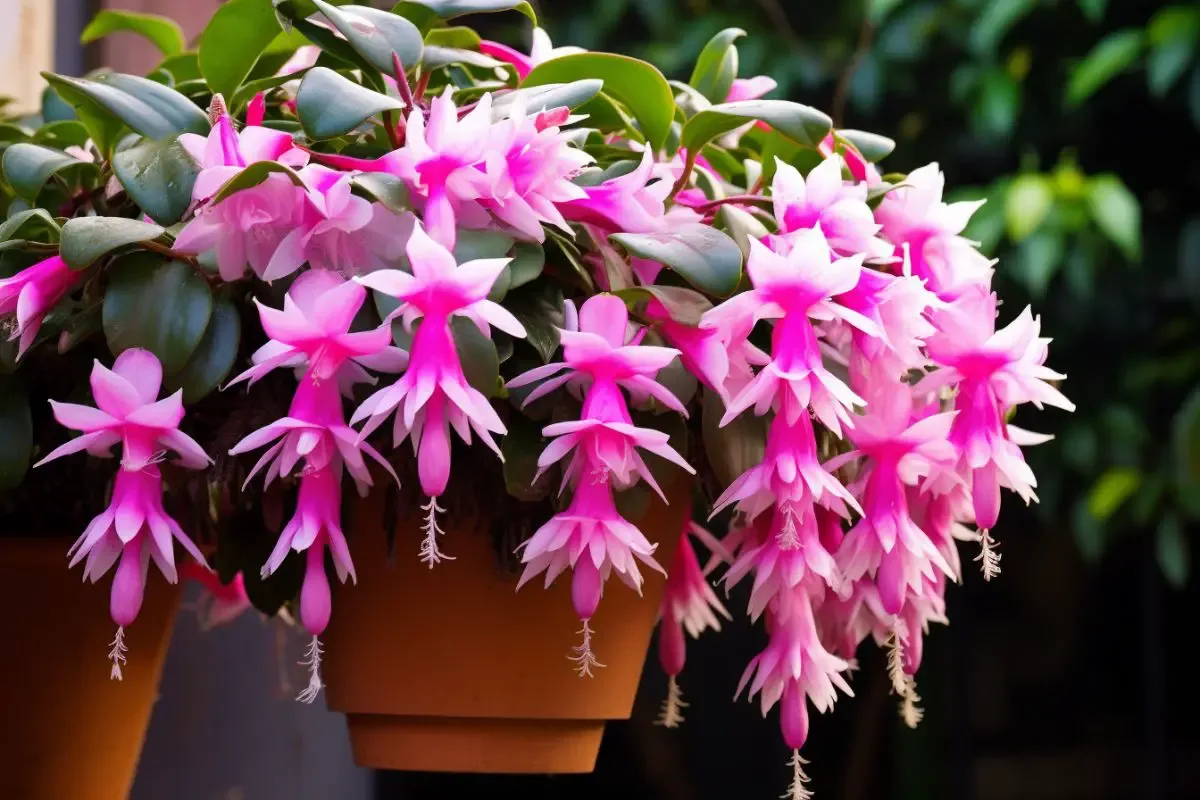
This is the classic Christmas Cactus variety that most people are familiar with. Its lovely crab-claw-shaped leaves and vibrant blooms ranging from reds to purples never cease to amaze me. Every time mine blooms, it’s like getting a special little gift.
2. Schlumbergera Russelliana
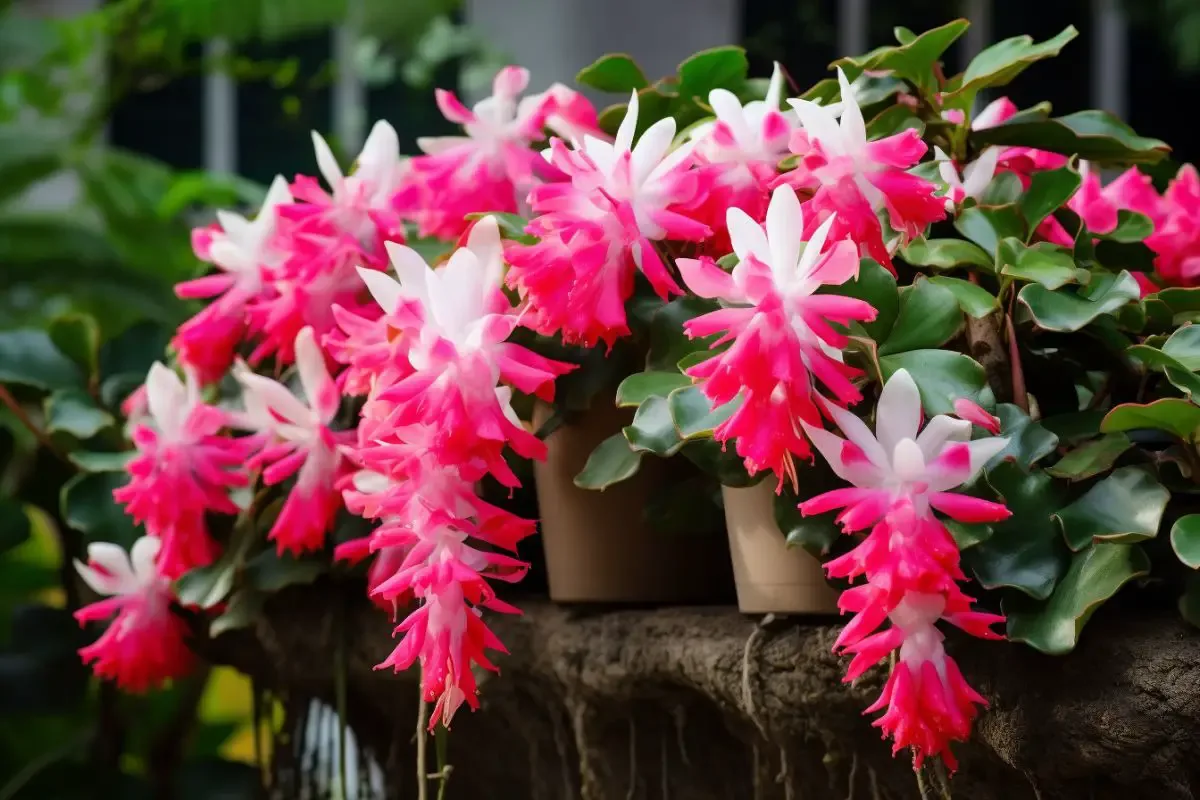
A slightly less common variety, but oh-so-beautiful! It has more tubular flowers, usually in shades of pink. It adds such a soft, delicate touch to any space, and trust me, it’s a conversation starter.
3. Schlumbergera ‘Gold Charm’
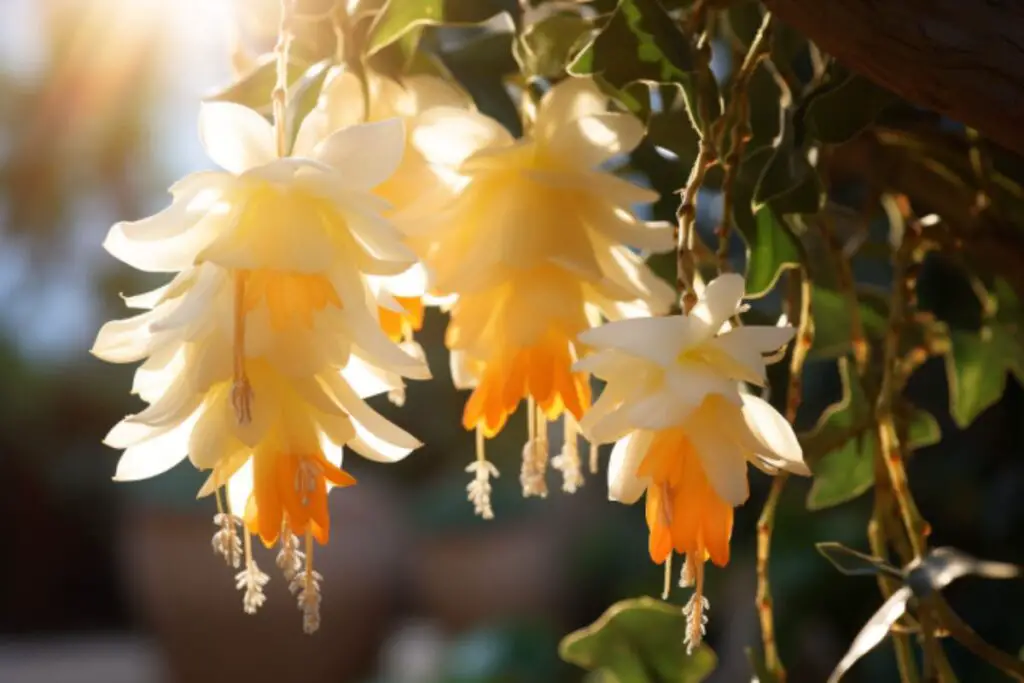
A rare gem in the Christmas Cactus world, this one boasts stunning golden-yellow flowers. If you ever come across this variety, grab it! It’s a delightful departure from the usual pinks and reds and is sure to brighten up your home.
Chapter 3: Christmas Cactus Care
Having grown several Christmas Cacti in various conditions, I’ve learned a thing or two about what makes them tick. And trust me, they’re more resilient than they look! But, as with all plants, there are certain conditions they favor. Let’s delve into the essentials.
Planting
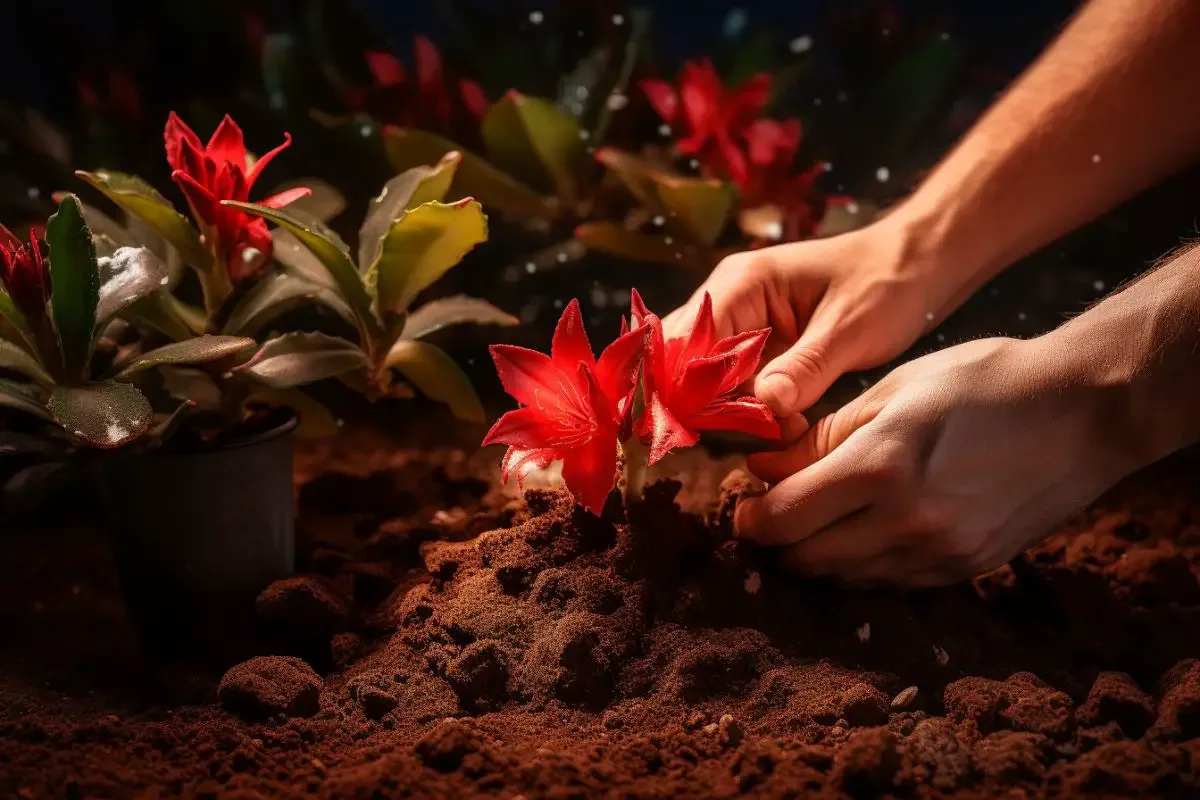
When planting your Christmas Cactus, ensure you select a pot with adequate drainage to prevent water from pooling at the bottom. These plants dislike having wet feet.
I usually go for a slightly larger pot than the current size of the plant, giving it room to grow. If you can find a pot with a saucer attached, even better. It helps catch any excess water and trust me, your tabletops will thank you.
Light
Christmas Cacti are a tad deceptive. One might assume, given their name, that they’d love to bathe in direct sunlight like their desert counterparts. However, these beauties prefer indirect light.
A spot near an east or north-facing window is ideal. Too much direct sunlight can make the leaves turn a reddish-purple. It’s kind of their way of getting a sunburn. So, if you notice this, move them to a slightly shadier spot.
Soil
Here’s where many folks get tripped up. Christmas Cacti aren’t big fans of regular potting soil. It retains too much moisture for their liking. Instead, opt for a well-draining cactus or succulent mix. I’ve had great success with a blend of potting soil, sand, and perlite. It provides the aeration these plants crave.
Water
Watering is critical for the Christmas Cactus. They aren’t as drought-tolerant as other cacti. Wait until the top inch of soil is dry before watering thoroughly. It’s crucial to avoid letting the plant sit in water.
If you’ve overwatered, those robust segmented leaves will start to look wrinkled and drop off. But don’t fret too much – with a bit of TLC, they bounce back beautifully.
Temperature and Humidity
These cacti thrive in temperatures between 60-70°F during the day, dropping slightly cooler at night. If you want to encourage blooming, give them cooler night temperatures of about 55°F a few weeks before their usual bloom time.
And humidity? These plants love it! If your home is on the drier side, placing a tray of water near the plant or occasionally misting can do wonders.
Fertilizer
To keep your Christmas Cactus happy and blooming, feed it with a balanced, water-soluble fertilizer diluted to half strength. I usually fertilize mine every month from late winter to early fall. Once the blooming phase starts, hold off on the fertilizer to let the plant focus on producing those stunning flowers.
Chapter 4: Pruning
Ah, the art of pruning! Some see it as a chore, but I consider it a bit of a therapeutic ritual. For the Christmas Cactus, pruning isn’t just about aesthetics—it’s also about encouraging fuller growth and more blossoms.
Right after it’s done blooming—typically in the late winter or early spring—is the best time to give your cactus a little trim. Simply pinch off a few segments from each stem with your fingers.
Doing this not only shapes the plant but also encourages it to branch out. And don’t throw away those pinched segments—they’re perfect for propagation! (But more on that in a bit.)
Chapter 5: Propagating
One of the joys of gardening is creating new plants from those you already have, and the Christmas Cactus makes this incredibly easy. Remember those segments you pinched off during pruning? Here’s where they come into play.
- Take the segments and let them sit out for a day or so to form a callous at the cut end. This step reduces the risk of rot when you plant them.
- Stick the calloused end into a pot filled with a slightly moistened cactus mix or a similar well-draining soil.
- Place the pot in a spot with indirect light and keep the soil consistently moist, but not waterlogged.
- In a few weeks, you should see roots forming. Once they’re well-established, you can treat them like a mature Christmas Cactus.
Chapter 6: How to Grow a Christmas Cactus From Seed
Growing Christmas Cactus from seeds is a longer journey than propagation, but it offers a certain satisfaction that’s hard to beat. If you’re patient and up for the challenge, here’s how:
- After your cactus blooms, it might produce fruit. Once the fruit matures and turns red, harvest it.
- Open the fruit to extract the tiny seeds inside. Clean them and let them dry.
- Sprinkle the seeds onto a tray or shallow container filled with a mixture of sand, peat moss, and soil. Press them lightly into the surface but don’t bury them.
- Cover the tray with plastic to retain humidity and place it in a warm location with indirect light.
- Keep the soil moist (using a spray bottle can be helpful here). Once seedlings appear, remove the plastic but continue to keep them moist.
- When the seedlings are big enough to handle, transplant them into individual pots.
Chapter 7: Growing in Pots
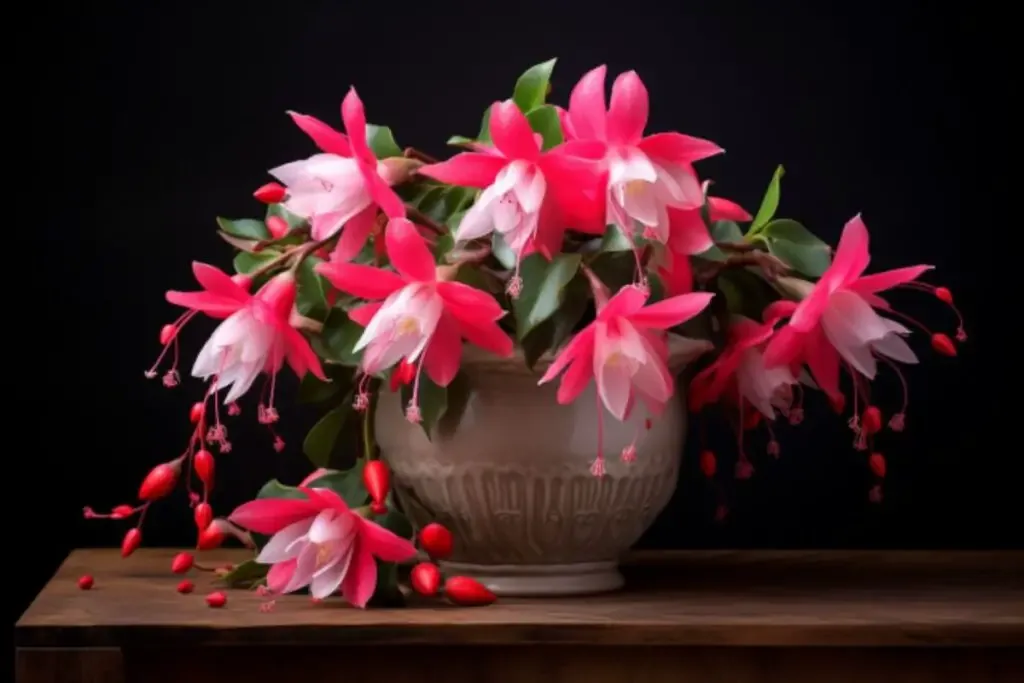
While Christmas Cacti can be planted in the ground in some climates, I absolutely adore growing them in pots. Not only does it give you more control over the soil and drainage, but it also allows you to move the plant around to find its ideal light condition.
Select a pot with good drainage, as mentioned earlier. Elevate the pot on feet or a saucer to ensure excess water can escape. Repotting every 2-3 years is a good idea as it gives you a chance to refresh the soil, check the roots, and move your cactus to a larger pot if needed.
The beauty of pots is their portability. If you notice your cactus isn’t thriving in one spot, simply move it to another. It’s a bit of a dance sometimes, but once you find that sweet spot, the vibrant blooms and lush growth make it all worth it!
Chapter 8: Overwintering
Winter, with its chilly embrace, often leaves many gardeners concerned about their beloved plants. But with the Christmas Cactus, overwintering is less about survival and more about setting the stage for those iconic holiday blooms. To encourage your Christmas Cactus to bloom, it needs a period of rest with cooler temperatures and shorter days. Starting in the fall:
- Place your cactus in a spot where it will experience nighttime temperatures of 50-55°F. A cool room, garage, or even a basement window can be ideal.
- Ensure the plant gets about 12-14 hours of darkness each night. Remember, it’s responding to the natural decrease in daylight hours, prepping itself for the blooming season.
- Water sparingly during this time. You want to reduce the amount, but not let the plant completely dry out.
Come early December, with proper overwintering, your Christmas Cactus should be gearing up to showcase its magnificent blooms!
Chapter 9: Transplanting
Ah, transplanting – the gardening equivalent of moving to a new, roomier home! For our Christmas Cactus, this can be a refreshing change. Here’s how I approach it:
- When to Transplant: Ideally, transplant when your cactus becomes root-bound or the soil looks exhausted. Every 2-3 years is a general guideline.
- Choose the Right Pot: A pot that’s 1-2 inches larger in diameter than the current one is perfect. Ensure it has good drainage.
- The Process: Remove the cactus gently from its current pot. Loosen the root ball a bit, but be gentle to avoid damaging the roots. Place some fresh soil mix in the new pot, position the cactus, and fill around it with more soil.
- After Care: Water lightly and place the newly transplanted cactus in its favorite spot, away from direct sunlight for a week or so. This helps it recover from any transplant shock.
Chapter 10: Common Pests & Diseases
Every gardener’s journey is dotted with challenges, and even the robust Christmas Cactus isn’t immune to pests and diseases.
- Mealybugs: These tiny white pests can be a nuisance. They’ll often hide in leaf joints. Wipe them off with a soft cloth dipped in alcohol or use insecticidal soap.
- Spider Mites: You might notice webbing on the plant or yellowing leaves. Again, insecticidal soaps or neem oil can be a savior.
- Root Rot: If you notice the base of your cactus turning soft or brown, it might be overwatered, leading to root rot. Transplant into fresh soil, cutting away any affected parts, and be mindful of your watering habits.
- Leaf Drop or Wrinkling: A sign of underwatering or too much direct sunlight. Adjust your care routine accordingly.
Remember, attentive care often keeps most problems at bay. And if issues arise, consider it a learning opportunity. As with all things in gardening, patience and persistence are key. Happy gardening, dear readers! Let those Christmas Cacti thrive and shine!

